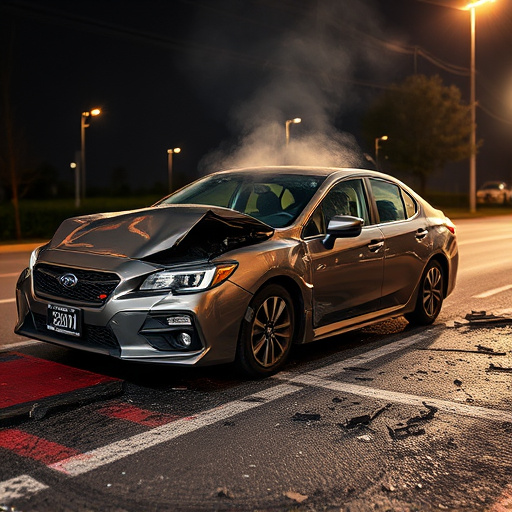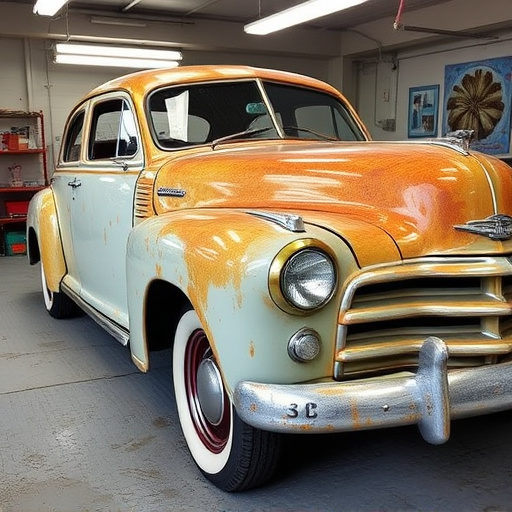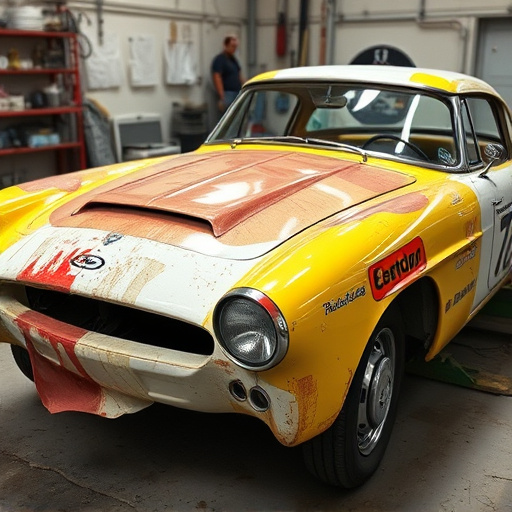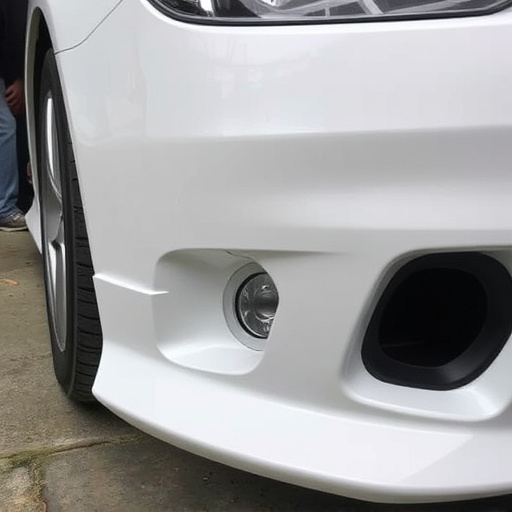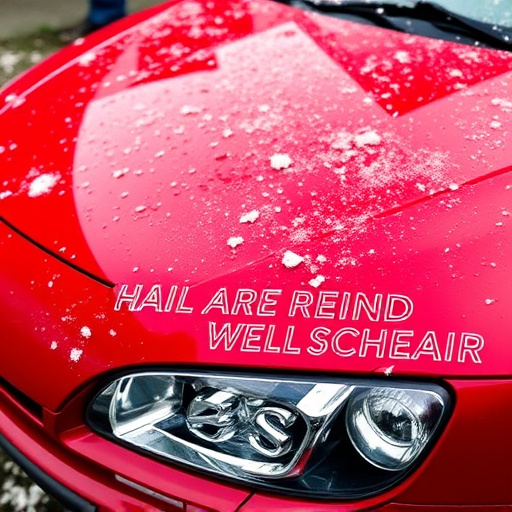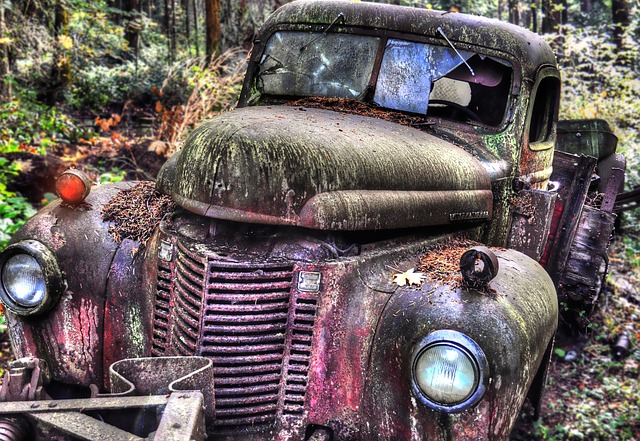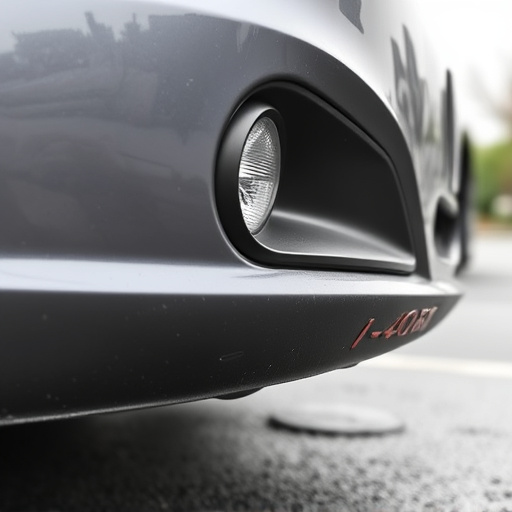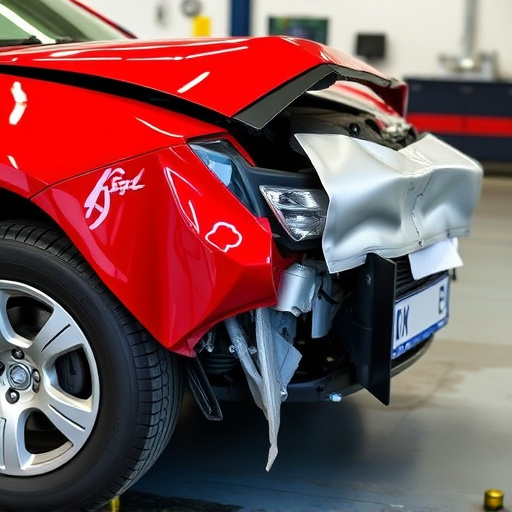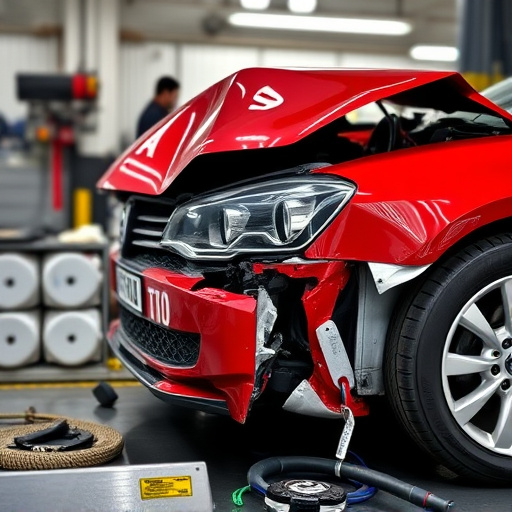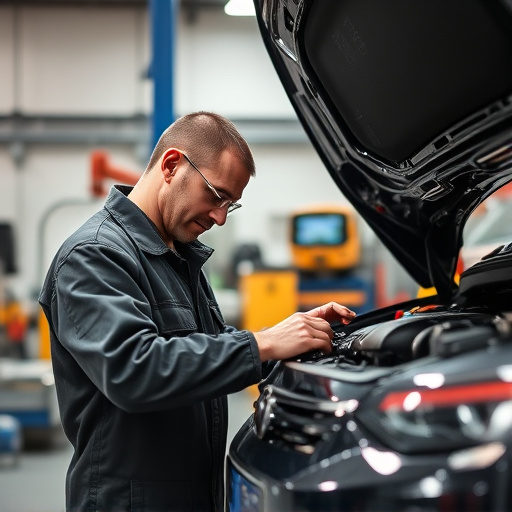Water-based paint (also known as eco-friendly or latex paint) has revolutionized collision repair in the automotive industry due to its clean application, excellent opacity, reduced volatile organic compound (VOC) emissions, and versatility across metal, wood, and plastic surfaces. These paints offer superior durability and quality while enhancing air quality, appealing to environmentally conscious individuals and DIY enthusiasts. Best practices involve proper preparation and specialized tools for optimal results in bumper repairs, tire services, and vehicle body shops transitioning to this modern technique.
In the realm of automotive collision repair, water-based paints have gained traction as a sustainable and effective alternative. However, numerous myths surround their usage, hindering widespread adoption. This article aims to debunk common misconceptions about water-based paint collision repair, highlighting its unique properties and advantages. We’ll explore why these paints are not just a trend but a game-changer in the industry, offering benefits from reduced environmental impact to superior finish quality.
- Understanding Water-Based Paint: Properties and Advantages
- Debunking Common Myths About Water-Based Paint Collision Repair
- The Benefits and Best Practices for Using Water-Based Paints in Collision Repair
Understanding Water-Based Paint: Properties and Advantages

Water-based paint, often referred to as eco-friendly or latex paint, has revolutionized the automotive industry, especially in collision repair. Unlike traditional oil-based paints, water-based paint is known for its unique properties and advantages that make it a preferred choice for many car body shops. Its primary component, water, acts not only as a solvent but also as a carrier, ensuring a cleaner and safer application process. This type of paint offers excellent opacity, allowing technicians to cover imperfections effectively during frame straightening or auto body painting procedures.
One of its standout benefits is the reduced environmental impact. Water-based paints have lower volatile organic compound (VOC) emissions, making them a more sustainable option for car body shops. This feature not only contributes to better air quality but also ensures that the repair process adheres to modern environmental standards. Moreover, these paints are versatile and can be used on various surfaces, including metal, wood, and plastic, making them suitable for diverse collision repair scenarios.
Debunking Common Myths About Water-Based Paint Collision Repair

Water-based paint collision repair has long been shrouded in myths, leading many to believe it’s less effective or more challenging than traditional methods. However, these perceptions are far from the truth. Water-based paints, often used in auto detailing and bumper repair, offer numerous advantages. They provide an eco-friendly option, as they produce lower volatile organic compound (VOC) emissions, making them a healthier choice for both workers and the environment.
Contrary to popular belief, water-based paint collision repair is just as durable and long-lasting as conventional methods. These paints are designed to withstand harsh conditions, including exposure to water, sunlight, and varying temperatures, ensuring their longevity in auto body services. Moreover, they offer excellent coverage, allowing for precise and seamless repairs, rivaling the quality of traditional paint jobs.
The Benefits and Best Practices for Using Water-Based Paints in Collision Repair

Water-based paints offer a multitude of benefits for collision repair, making them a preferred choice among professionals and increasingly, DIY enthusiasts. Their low-VOC (Volatile Organic Compound) composition not only reduces the harmful fumes that can linger in enclosed spaces like vehicle body shops but also contributes to improved air quality, benefiting both workers and customers. This eco-friendly aspect is particularly appealing to those prioritizing sustainability.
Best practices for using water-based paints in collision repair involve proper preparation of the damaged area, ensuring it’s clean, dry, and free from grease or oil. A good surface profile and priming are essential steps before applying the paint, allowing for optimal adhesion. Using specialized tools like spray guns with adjustable settings can ensure a smooth, even coat, reducing the need for extensive sanding between layers. This method streamlines the repair process, leading to faster turnaround times while delivering durable, high-quality finishes comparable to traditional solvent-based paints in terms of both aesthetics and longevity, making water-based paint collision repair a smart choice for bumper repairs, tire services, or any vehicle body shop looking to modernise their approach.
Water-based paint collision repair has gained popularity due to its eco-friendly nature and superior properties. By debunking common myths, we’ve highlighted the numerous benefits of using water-based paints in collision repair, including their reduced odor, faster drying time, and ease of use. Embracing these advantages can lead to more efficient, cost-effective, and environmentally conscious restoration processes. Incorporating best practices ensures top-notch results, making water-based paint a game-changer in the industry.

